According to the “rule of three,” people can go three minutes without oxygen, three days without water, and three weeks without food. But in the animal kingdom, some creatures have seemingly superhero powers that allow them to go much longer without the necessities of life. It’s an adaptation that helps them survive in some of the world’s harshest conditions. In fact, some animals can go a lifetime without drinking water, even if that lifetime is 20 years!
11. Camel (15 days)
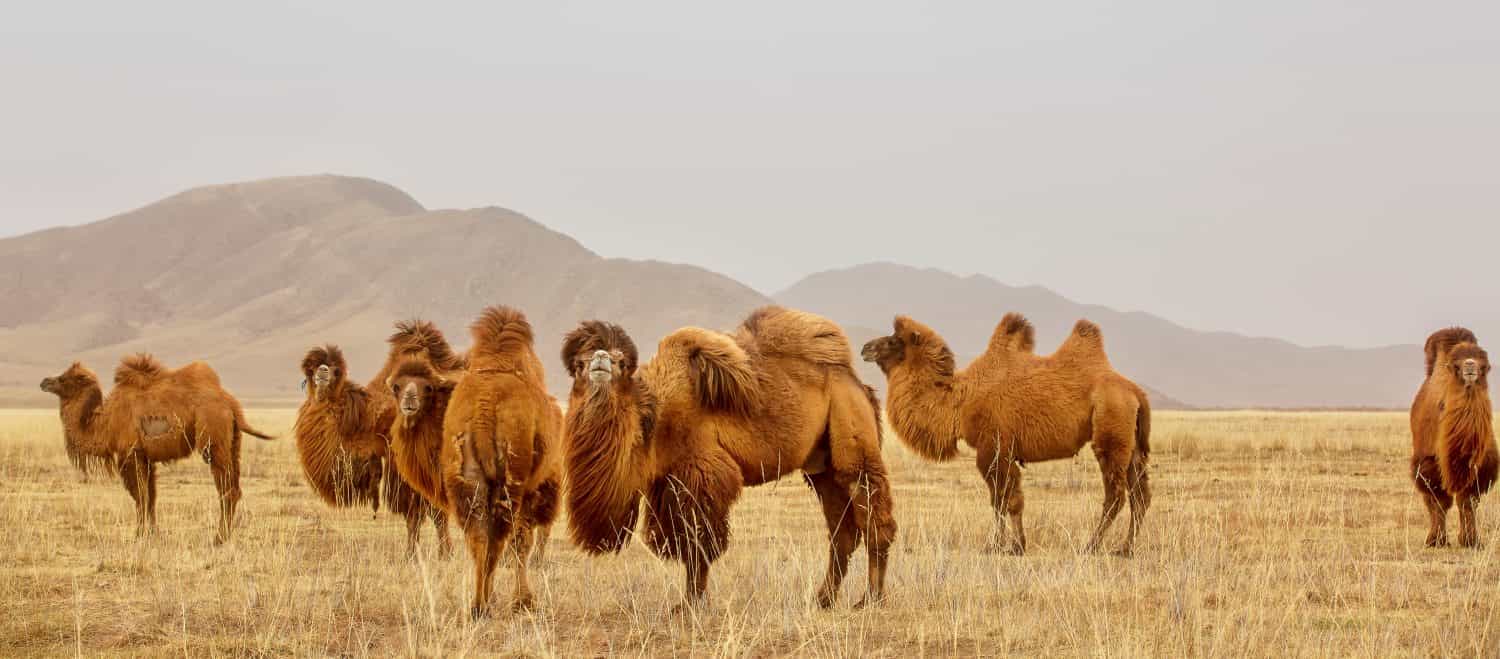
Bactrian camels in Central Asia have two humps and a woolly coat.
©Alex Tumee/Shutterstock.com
Surprisingly, when it comes to animals capable of going without water, camels don’t even make it into the top 10. But in all due respect to our thirsty camel friends, they do have a unique water storage system. They store fat in their humps that they use for energy and hydration when water is scarce. The humps swell when they are full and begin to sag when the fat stores are used up. It’s a pretty convenient way for camel riders to tell how much “gas” their animal has left so they can start looking for the next oasis for a fill-up!
10. Giraffe (21 days)

Giraffes’ incredibly long necks still have only seven vertebrae, like people.
©PLANET EARTH/Shutterstock.com
If you’re going to cross the desert riding an animal, a giraffe would get you a week further down the road than a camel. Giraffes can go up to 21 days without a drink. They extract moisture from the plants they eat, particularly acacia leaves. Giraffes have to spread their front legs to enable them physically to drink water. After a long dry spell, they can drink up to 14 gallons (54 liters) at once.
9. Desert Tortoise (1 year)
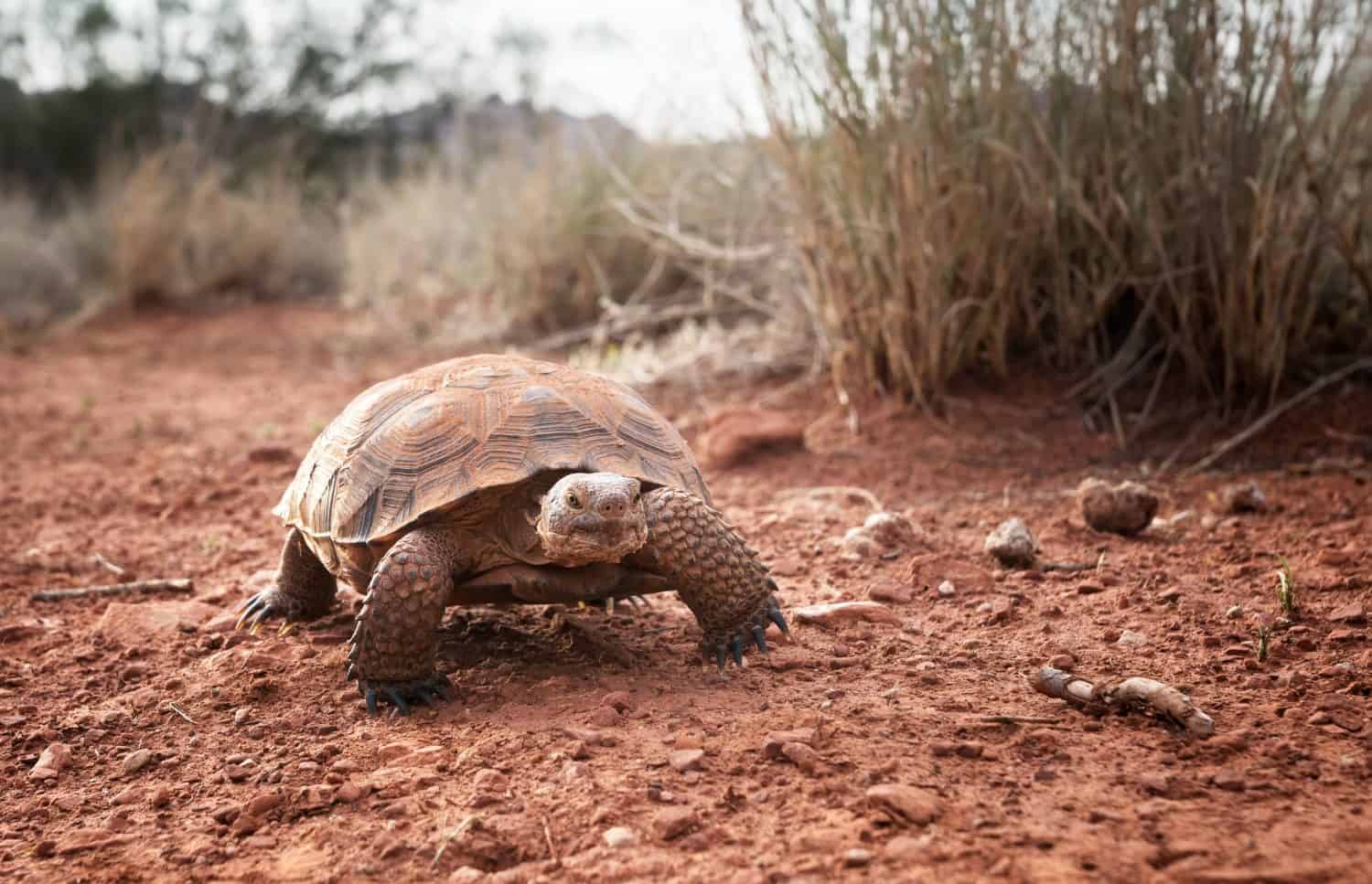
The range of desert tortoises is in the southwestern U.S. and Mexico.
©IrinaK/Shutterstock.com
Desert tortoises come in two main species that live in the Mojave and Sonoran Deserts. Inside their domed shells, they have an enlarged bladder that can store 40% of their body weight in water and liquid waste. It holds enough to help the tortoise survive a dry spell of up to a year . . . unless they get scared. A sudden fright can cause a desert tortoise to urinate out all of its water reserves. If it’s a dry season and it can’t replenish the moisture, it could die quickly.
8. Jerboa (3 years)

Jerboas are able to jump high and travel quickly.
©reptiles4all/Shutterstock.com
The jerboa is native to Eastern Europe, North Africa, and Asia. They are highly adapted to desert conditions. They are able to survive temperature extremes, jump very high to avoid predators, and travel quickly. Additionally, jerboas have large ears to help them detect the slightest sound, which could be an approaching predator. They get their water from the plants and insects they eat, going their entire three-year lifetime without drinking liquid water.
7. Water-Holding Frog (5 years)

This species of frog is well-adapted to the irregular rainfall of the outback.
©Ken Griffiths/Shutterstock.com
Living in the arid conditions of the Australian outback, this frog hyper-hydrates itself by soaking up water through its skin. When the environment dries up, it burrows underground and creates a cocoon of skin around itself to prevent water loss. Then it slowly eats its skin to keep itself from getting too hungry. Crazily enough, it can live five years in this condition!
6. Kangaroo Rat (5 years)

The
kangaroo rat
looks similar to a jerboa but has shorter legs.
©Usha Roy/Shutterstock.com
Despite their name, kangaroo rats are not related to kangaroos and aren’t found in Australia. They’re small rodents native to the deserts of North America. They got their name from their remarkable ability to jump long distances, using their tails to help them stick the landing. One of their adaptations to desert life is a set of kidneys that conserve as much water as possible from their urine. They also don’t sweat but have oily coats to help keep them cool. With these kinds of adaptations, they can go their whole five-year lifetime without liquid water!
5. West African Lungfish (5 years)
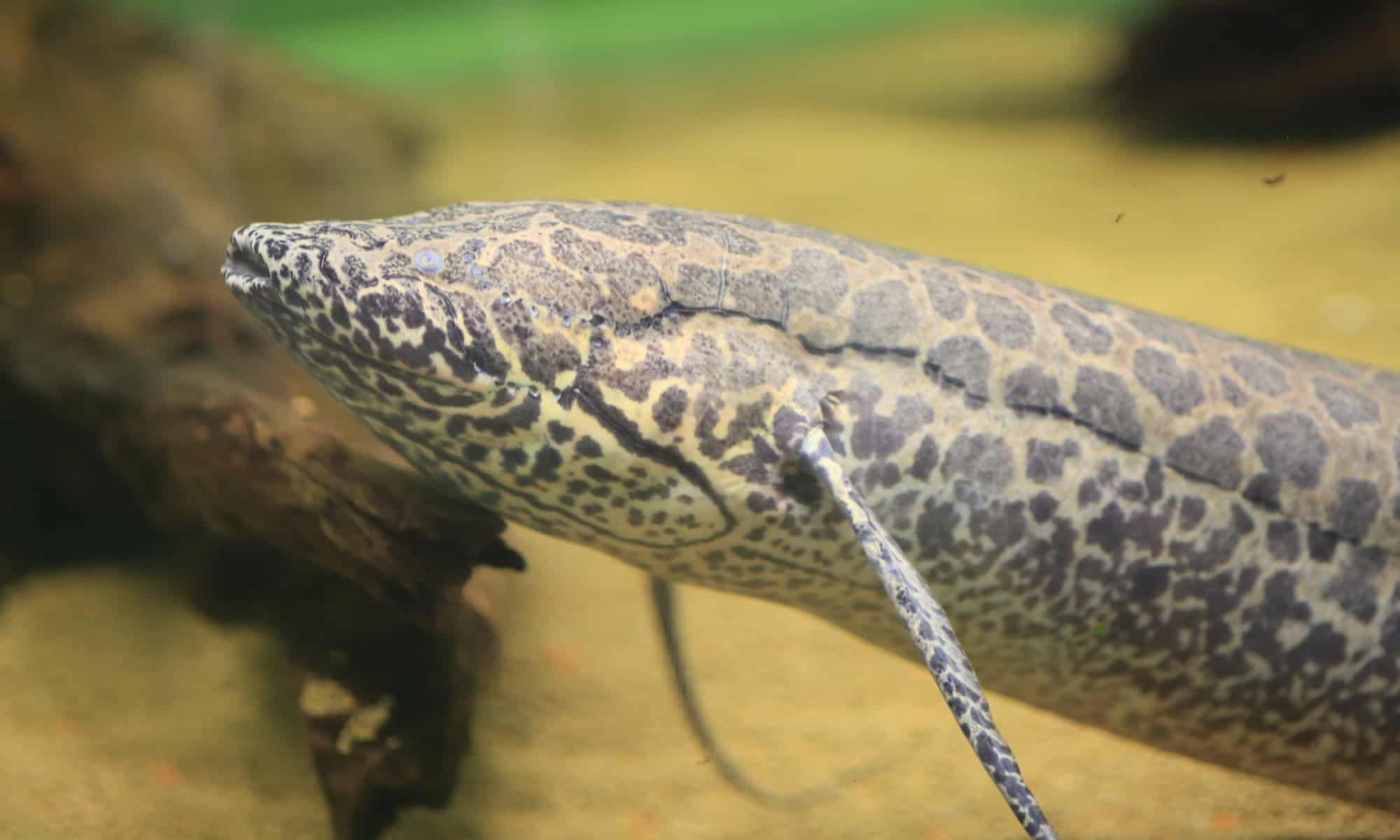
Lungfish
were present in the Jurassic period and are still around today.
©iStock.com/feathercollector
West African lungfish have survived on Earth for almost 400 million years. They have gills to breathe underwater but can also extract oxygen from the air. When drought sets in, they burrow into the mud and encase themselves in a mucus cocoon for protection. They can survive this way for up to five years, digesting their own muscle tissue for nutrition.
4. Gerenuk (8 years)
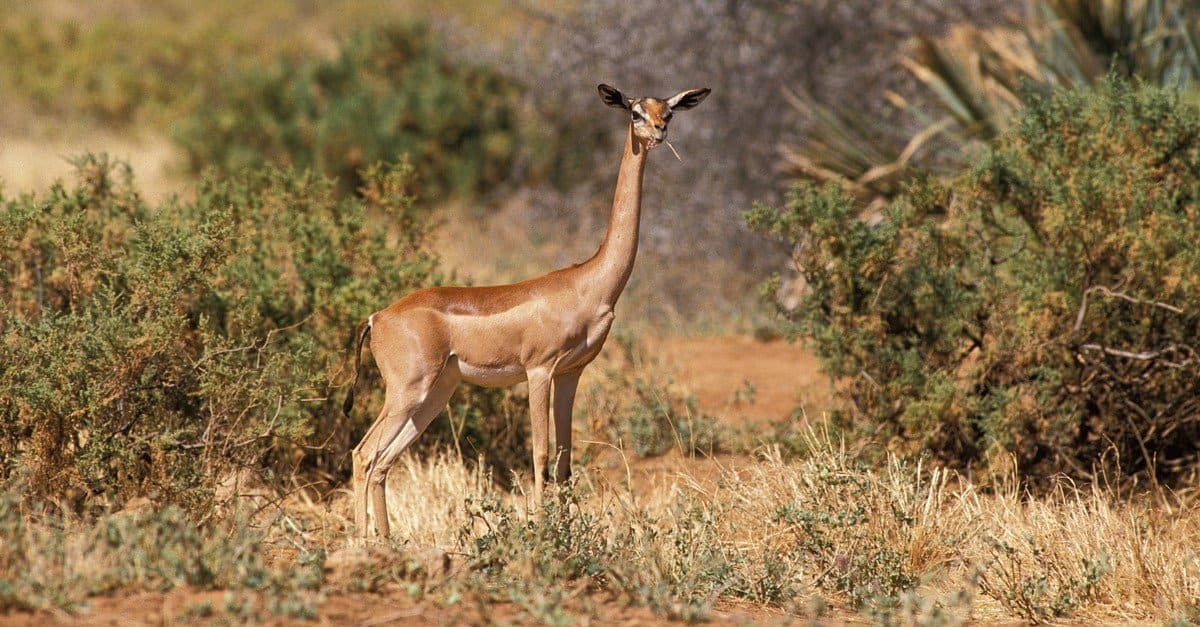
Gerenuks are a type of
antelope
native to East Africa.
©slowmotiongli/Shutterstock.com
The first time you see a picture of a gerenuk, you might think it’s been photoshopped. But these strange creatures that look part antelope, part giraffe are real. They’re native to the deserts and savannas of East Africa. Their long necks help them reach leaves from high branches and spot danger from a distance. They conserve water with nasal passages that prevent moisture loss through evaporation. Their bodies conserve water from their urine, which makes it highly concentrated. And they move no more than they have to, standing in place to browse. All of this helps them conserve moisture from their food and go up to eight years without drinking liquid water.
3. Couch’s Spadefoot Toad (10 years)

These toads grow from eggs to legged tadpoles in only 10 days.
©Viktor Loki/Shutterstock.com
Couch’s spadefoot toads live in the Colorado Desert. They grow at a fast rate. The eggs hatch in two days; the tadpoles grow legs in 10 days; and by three months they’ve reached half their adult size. In dry periods, they burrow down to a wet layer of sand and surround themselves with layers of partially shed skin. Retaining water like this, they can survive up to 10 years without drinking water!
2. Arabian Sand Gazelle (14 years)
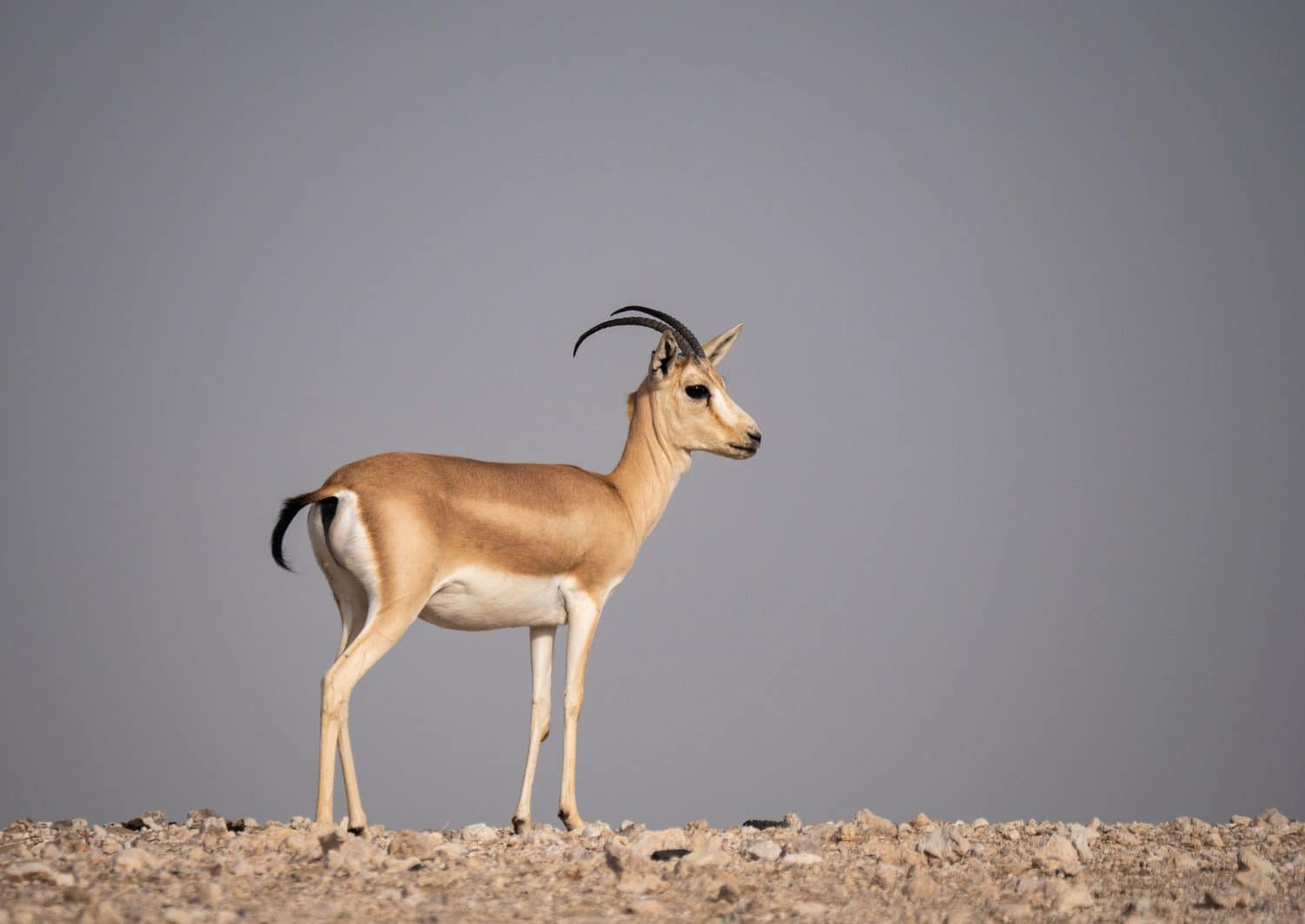
Arabian sand gazelles are a vulnerable species, with only 3,000 in the wild.
©Matt Starling Photography/Shutterstock.com
Sand gazelles are found in small numbers scattered across the Arabian Peninsula and neighboring areas. They survive in the intense desert heat by shrinking their hearts and livers up to 30%. These organs consume a lot of oxygen and cause animals to breathe more, losing moisture with every exhalation. With smaller hearts and livers, they breathe less and lose less water. Incidentally, this also helps reduce how much hot and dusty desert air they inhale, so it’s a win-win for these graceful creatures.
1. Thorny Devil (20 years)
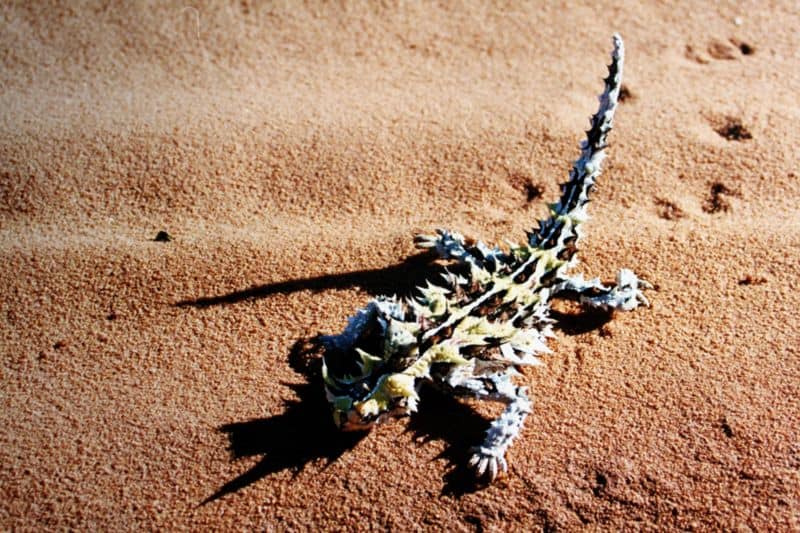
Australia’s thorny devil is the world champion of non-water drinkers.
Zoologists have really not been nice to Australia’s thorny devil. As if that common name wasn’t insulting enough, its Latin scientific name is Moloch horridus. Moloch was an ancient Canaanite god who was the object of child sacrifice. “Horridus,” actually means “rough” or “bristly” but can also mean “rude” or yes, you guessed it, “horrid.”
In reality, this little 8.3 in (21 cm) lizard is only aggressive to the ants it eats. Its mouth is so specifically adapted to eating ants, that it physically cannot drink liquid water. Instead, dew droplets condense on its scales and get absorbed from all over its body to the mouth through capillary action. When things are especially dry, they can bury themselves in the sand to absorb whatever minimal moisture might be there. As one of these little devils can live for 15-20 years, it is the hands-down winner, the animal that can go the longest without drinking water.
The photo featured at the top of this post is © Brent Coulter/Shutterstock.com
Thank you for reading! Have some feedback for us? Contact the AZ Animals editorial team.






